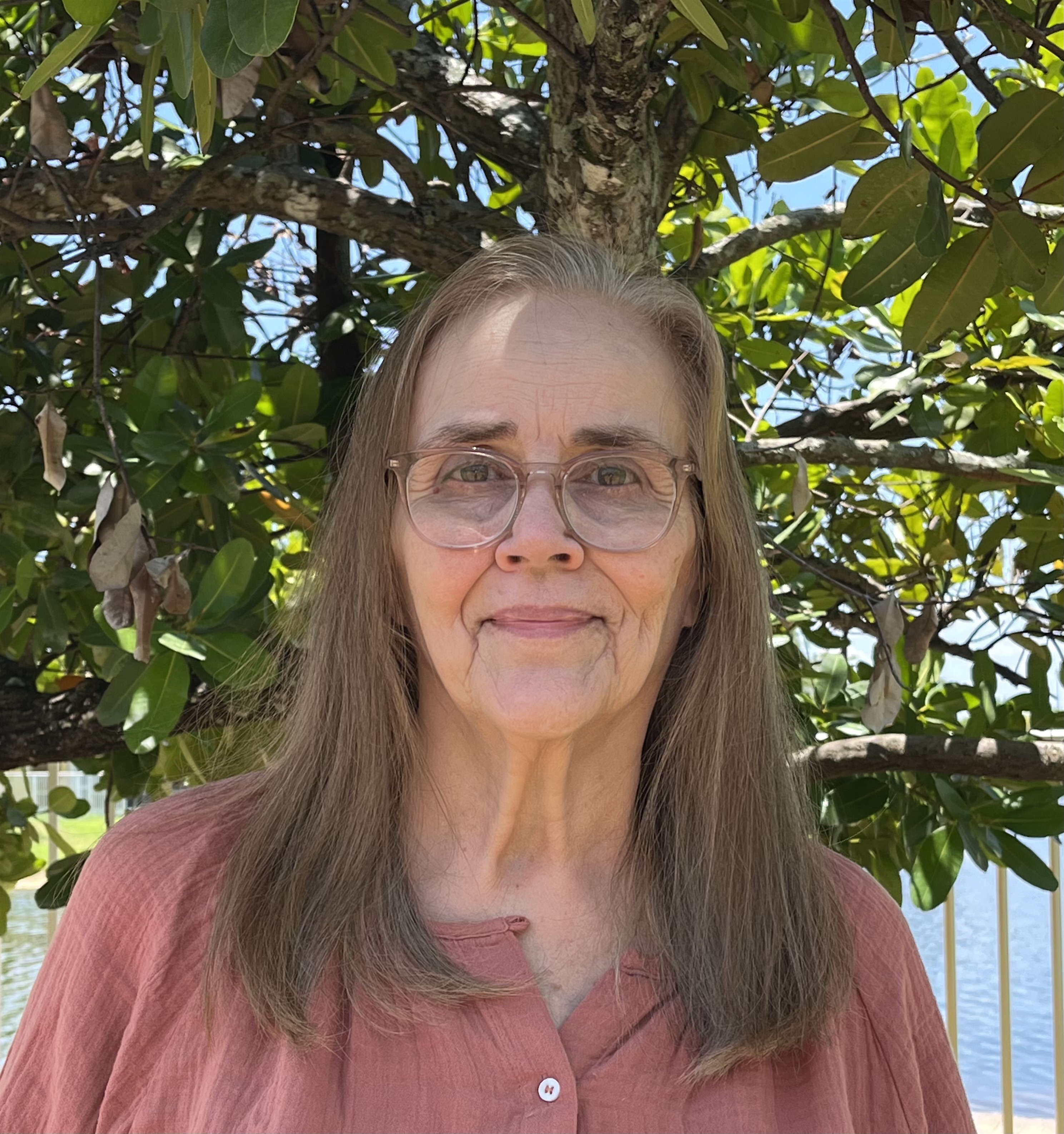By Hailey Punis
Mary ᎺᎵ Rae has been key to DAILP’s goal of promoting indigenous language learning and persistence. In Cherokees Writing the Keetoowah Way (CWKW), she created instructional resources from our translated documents, including learning resources on the syllabary, information about day-to-day words, conversational phrases, and conversation starters. These modules include audio listening labs and are beautifully illustrated and designed. Mary ᎺᎵ Rae, a certified Cherokee language instructor through the Cherokee Nation of Oklahoma, is a translator and speaker of Cherokee who was recently featured in the Cherokee Phoenix for her support of language learners in their writing and listening comprehension of Cherokee.

Mary ᎺᎵ Rae first started learning Cherokee later in life through her teacher Ed Fields, a Cherokee Nation language instructor, who sparked her dedication to the Cherokee language and community through his teaching process of explaining words from the speakers’ point of view, and illustrating Cherokee thinking through storytelling.
“And there’s so many things he would bring out about the Cherokee language really showing you how the words picture what they’re saying,” Mary ᎺᎵ Rae explained during our interview. “So it gets you out of the habit of thinking, oh, there’s an equivalent word for this in English. It translates to this. And sort of helps you to be thinking about when you see or hear that word, you’re seeing a picture. And that is extremely unique.”
Her lifelong goal is to think in Cherokee and understand the lens of Cherokee speakers, which translates into her contributions to the DAILP team and its curriculum. Mary ᎺᎵ Rae began with DAILP’s curricular materials seven years ago by developing a set of digital lessons out of document translations. For the last 18 months, Mary ᎺᎵ Rae has been developing the audio listening labs during the second phase of the project. She was eager to develop the recordings to go along with the translations in Cherokees Writing the Keetoowah Way. The audio files liven the practice of language with the combination of the audio, writing, archival documentation, and transcription. “It’s very important to be able to hear the words and how to pronounce. But it goes way beyond just pronunciation. It’s about hearing words in context. Becoming aware of similarities and related words. And this helps you understand without having to grasp after the meanings of every word…. For thousands of years, Cherokee was just spoken and not written. And this is how you learn.”
The lessons help learners to engage with Cherokee and allow learners, especially second language learners such as herself, to activate their interests and develop their ideas with accessibility. “It’s more about awakening interest. And showing students that their ideas are important too. And they can have their own way to approach Cherokee. There’s not just one way to learn. Everybody’s different.” Mary ᎺᎵ Rae’s work in this way has helped learners by providing new resources and creating a multifaceted, comprehensible space for acquiring knowledge. Her tremendous influence on DAILP’s digital collection, Cherokees Writing the Keetoowah Way (CWKW), has played a crucial role in shaping DAILP into what it is today. We are honored to have Mary ᎺᎵ Rae within our DAILP community who opens such a pathway to the Cherokee language and learning.
“It’s very important to be able to hear the words and how to pronounce. But it goes way beyond just pronunciation. It’s about hearing words in context. Becoming aware of similarities and related words. And this helps you understand without having to grasp after the meanings of every word…. For thousands of years, Cherokee was just spoken and not written. And this is how you learn.”
— Mary ᎺᎵ Rae